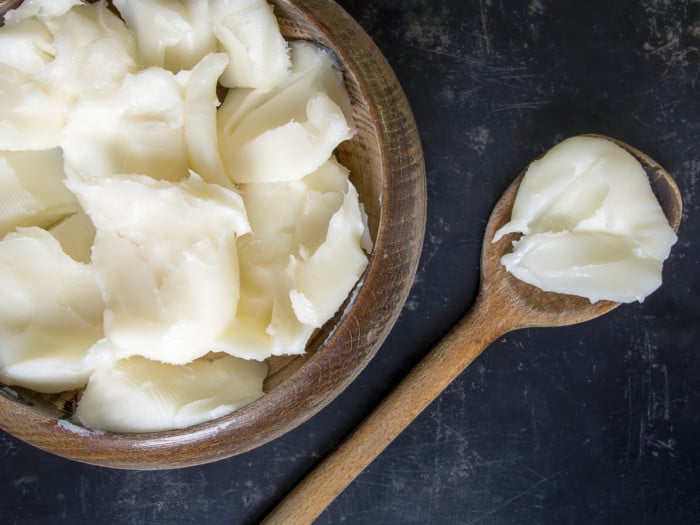If you spend a lot of time in the kitchen, knowing the best shortening substitutes can be very helpful, whether you want to make a healthier recipe, or simply change up the flavor or texture in your baked goods. There are a few reasons that people might choose to use shortening substitutes. Shortening is by no means healthy, and some people prefer less processed fats. Certain substitutes will also provide more flavor to the recipe.
Shortening Substitutes
Shortening is a semi-solid fat, made from either animal fats or vegetable fats, that is commonly used for baking. It is not often found in modern recipes but is popular in older recipes. Because shortening is flavorless and usually 100% solidified fat, it makes very flaky doughs and crusts. Here are several substitutes you can use instead of shortening in your next batch of delicious baked treats. [1]
Butter
Butter is the most popular substitute for shortening. If the recipe calls for shortening by volume (1 tbsp, for example), then butter can be substituted at a 1:1 ratio. However, if the recipe specifies weight, then add roughly 25% more butter. If using salted butter, and the recipe also calls for salt, take that into consideration. If you are making biscuits or cookies, keep in mind that butter will cause the dough to spread out thinner when baking. Do not substitute butter for shortening when frying, as the butter will burn. [2]

Shortening is any fat that is solid in room temperature & used to make the crumbly pastry. Photo Credit: Shutterstock
Vegetable Oil
Shortening is usually just solidified vegetable oil, so this is a great substitute for any recipe. It is perfect for any recipe that requires frying and can be used in a 1:1 ratio. If using vegetable oil in baking, use 3/4 of vegetable oil for every 1 unit of shortening, and add in extra sugar and egg to increase the binding power.
Lard
Lard is definitely not one of the healthier substitutions for shortening, but it is very effective. Animal fats are non-hydrogenated, but they are full of saturated fats. However, depending on the recipe, lard (or any other animal fat) can add immense flavor. If using lard as a substitution for shortening, the ratio is one cup of shortening to one cup minus 2 tbsp of lard. This is because animal fats are heavier than vegetable fats. [3]

Early breakfast Photo Credit: Shutterstock
Applesauce
If the recipe calls for shortening in a baked recipe, like cake or muffins, then applesauce is a wonderful, healthy substitution. It’s especially popular in vegan and low-fat recipes. You can substitute one cup of shortening with only half a cup of applesauce. If the applesauce is very sweet, slightly reduce the amount of sugar in the batter recipe. [4]
